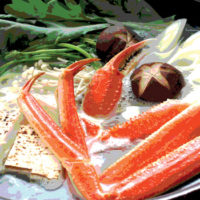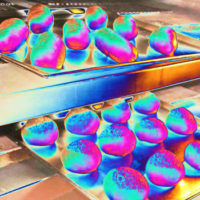Utilization of Steam Heat Generated via Microwave Energy
Most restaurants and retail food stores rely upon traditional steamers to cook seafood products to the required temperature of 145 °F as specified within the U.S. Food and Drug Administration Food Code. The problems associated with conventional steamers include operational costs, difficulty of cleaning and sanitizing the interior area of conventional steamers. A solution to these issues is the use of microwave-generated energy to steam cook seafood products within covered Cambro pans containing water. First, the microwave does not require expensive and complicated steam and waste water plumbing hookups. Second, the Cambro pans are available in different sizes to economically accommodate the volume of food items being prepared. Third, the stainless steel microwave units as well as the Cambro pans are easily cleaned and sanitized. Fourth, cooking time is reduced significantly in that a traditional 1 ½ pound lobster can be steamed to a minimal internal temperature of 145 °F in a total of 4 minutes (2 minutes cooking and 2 minutes holding). Fifth, there is a large savings in energy costs using microwaves to generate steam as opposed to using conventional steamers.
The four major objectives of this research were the following: (a) compare the cooking of seafood using traditional microwave energy for heat transfer versus using microwave-generated steam within covered Cambro pans; (b) determine time/temperature cooking parameters for heat transfer using microwave-generated steam within a covered Cambro pan; (c) determine variations of temperature within various seafood products processed using microwave-generated steam within a covered Cambro pan, and (d) ultimately, determine the equivalency of heat transfer within seafood utilizing steam generated via microwave energy within a covered Cambro pan compared to traditional seafood steamers.
In our study, the temperature of the steam environment in the covered Cambro pan, which contained water only, was 191 °F after 2 minutes at high power
The 1 ½ pound lobster in a covered Cambro pan with 45 ml water added, after 2 minutes at high power followed by 2 minutes of stand time, exhibited internal temperature readings at five locations from head to tail and left and right claws of the lobster claws were 170.0 °F and 149.3 °F, respectively.
In a comparison of a covered Cambro pan with an uncovered Cambro pan, a 1 ½ pound lobster was placed in an uncovered Cambro pan with 45 ml water added. After 2 minutes at high power followed by 2 minutes of standing time, the internal temperature readings at five locations from head to tail and left and right claws of the lobster were 138.8 °F and 149.9 °F, respectively.
In an effort to show that the steam was being generated from the water, a 1 ½ pound lobster was placed in an uncovered Cambro pan with no water added. After 2 minutes at high power followed by 2 minutes of standing time, the internal temperatures taken at five locations from head to tail and left and right claws of the lobster claws were 176.1 °F and 194.7 °F, respectively.
In the last experiment, 23.2 oz. of shrimp were placed in a covered Cambro pan with 45 ml water added. After 2 minutes at high power followed by 2 minutes of standing time, the internal temperatures were taken on 12 shrimp at the largest, headless end and was 180 °F to 198 °F.
This study showed that cooking seafood in covered Cambro pans with added water and using microwaves as the energy source to produce steam was equivalent to cooking seafood in conventional style steamers.
>Looking for a reprint of this article?
From high-res PDFs to custom plaques, order your copy today!








